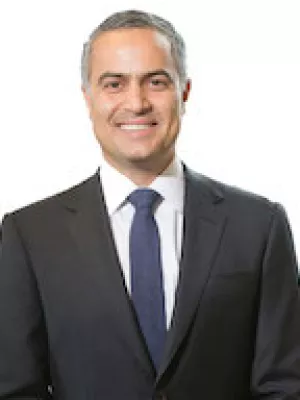Biography
Education
| Institution | Degree | Dept or School | End Date |
|---|---|---|---|
| University of Washington | Vascular Surgery Fellowship | 05/2017 | |
| University of Washington | Surgical Critical Care Fellowship | 05/2015 | |
| University of Washington | General Surgery Residency | 05/2013 | |
| Harvard University | MPH | Epidemiology & Statistics | 05/2010 |
| University of Washington | General Surgery Internship | 05/2008 | |
| New York University | MD | Medicine | 05/2007 |
| University of California | BA | Mathematics & Philosophy | 05/1999 |
Board Certifications
American Board of Surgery, General Surgery
American Board of Surgery, Surgical Critical Care
American Board of Surgery, Vascular Surgery
Collaboration Interests
I am interested in:
- academic collaboration
- academic senate committee service
- community and stakeholder organizations
- companies and entrepreneurs
- multicenter clinical research
- physician scientist
- press
- prospective donors
Clinical Expertise
Vascular Surgery
Trauma Surgery
General Surgery
Surgical Critical Care
In the News
Grants and Funding
- Wearable Machine-Learning Ultrasound Monitor | Department of Defense | 2024-07-01 - 2027-06-30 | Role: Principal Investigator
- Pre-hospital thermal regulation for the prolonged field care of traumatic injuries | Department of Defense | 2023-10-12 - 2026-04-05
- Wearable machine-learning ultrasound monitor to detect hemorrhage and guide prolonged damage control resuscitation | Department of Defense | 2022-11-16 - 2025-05-31 | Role: Principal Investigator
- Pre-Hospital Thermal Regulation For The Prolonged Field Care of Traumatic Injuries | Department of Defense | 2022-03-01 - 2025-05-31 | Role: Principal Investigator
- Therapeutic Limb Cooling to Prevent Amputation in pDCR | DoD CDMRP | 2017-10-01 - 2022-09-30 | Role: Principal Investigator
- Pre-Hospital Thermal Regulation For The Prolonged Field Care of Traumatic Injuries | Department of Defense | 2021-04-12 - 2021-07-12 | Role: Principal Investigator
- VascuSight (3D ultrasound monitoring of critically ill patients) | University of Washington | 2018-06-01 - 2020-06-01 | Role: Principal Investigator
- A Feedback Controlled Pressure Monitoring System for Limb-Stabilizing Medical Air Splints | Amazon | 2018-04-01 - 2019-04-01 | Role: Co-Investigator
- LC-tourniquet (a novel life and limb saving cooling tourniquet) | University of Washington | 2016-01-01 - 2018-01-01 | Role: Principal Investigator
- A novel life and limb saving cooling tourniquet | University of Washington | 2015-09-01 - 2016-09-01 | Role: Principal Investigator
- A novel life and limb saving cooling tourniquet | Wallace H. Coulter Foundation | 2015-06-01 - 2016-06-01 | Role: Principal Investigator
- Adult endothelial progenitor cell trafficking | NIH/NCCR | 2005-09-01 - 2006-09-01 | Role: Principal Investigator
Research Narrative
Dr. Aarabi's research interests are in the areas of vascular trauma, public health, and surgical innovation. He has recently been working on novel devices for the care of critically ill patients, has filed several patents related to this work at the University of Washington, and has been awarded a $1.5 million Department of Defense award for research and development of a novel limb cooling tourniquet device.
His research plans at UCSF are to continue the development of these medical devices so that they will be able to translate to the care of critically ill patients at the bedside. Further, Dr. Aarabi plans to continue participating in clinical collaborations with trauma-vascular surgeons nationally and internationally and to systematically study vascular trauma at high volume level 1 trauma centers such as Highland Hospital and San Francisco General Hospital.
Research Interests
Surgical innovation
Public health and health systems improvement
Management of vascular trauma
Publications
- ACGME case logs: Surgery resident experience in operative trauma for two decades.| | PubMed
- Noningested intraperitoneal foreign body causing chronic abdominal pain: a role for laparoscopy in the diagnosis.| | PubMed
- High-carbohydrate, high-protein, low-fat versus low-carbohydrate, high-protein, high-fat enteral feeds for burns.| | PubMed
- Comparison of minimally invasive versus conventional open harvesting techniques for iliac bone graft in secondary alveolar cleft patients.| | PubMed
- Pediatric appendicitis in New England: epidemiology and outcomes.| | PubMed
- Don't ignore home grown medical systems.| | PubMed
- Mesothelial cyst presenting as an irreducible inguinal mass.| | PubMed
- Treating chronic wound infections with genetically modified free flaps.| | PubMed
- Bisphosphonate-associated osteonecrosis of the jaw: successful treatment at 2-year follow-up.| | PubMed
- Pulsed electromagnetic fields accelerate normal and diabetic wound healing by increasing endogenous FGF-2 release.| | PubMed

